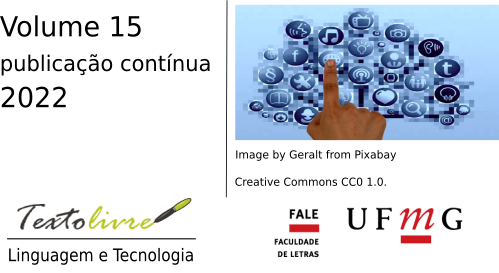Neuromethogology and neuroimaging for a teacher training
DOI:
https://doi.org/10.35699/1983-3652.2022.40454Palabras clave:
Teaching Methodology, Teaching Neuromethodology, Neuroimaging, Teacher Training, BrainResumen
Neuromethodology is a concept about which we hardly find information in scientific databases and specialized literature. Therefore, the general objective of the study presented is to analyze the relationship between teaching methodology, teaching neuromethodology, educational inclusion, technology and teacher training. The research design is non-experimental, descriptive, explanatory, correlational and regression. The sample used was, by convenience, taken from university teachers from Spanish, Brazilian, Colombian and Paraguayan universities, with a number of 815 participants. The research instrument was an ad hoc Likert scale questionnaire with excellent reliability (Cronbach's Alpha, .969), which was validated in content and construct through an exploratory factor analysis. Correlation analysis and automatic linear modeling provide a first conclusion showing that neuromethodology gives scientificity to the technologies used by the teacher, being fundamental for educational inclusion. The neuroimaging examples provide an idea of the research we are developing in neuromethodology.
Descargas
Citas
ARNAIZ, P. El reto de educa en una sociedad multicultural y desigual. In: PALOMINO, A.; ET AL. (Eds.). Los desafíos de la Educación Especial en el umbral del XXI. Murcia: Servicio de Publicación de la Universidad de Murcia, 1996.
BOOTH, T.; AINSCOW, M. Index for Inclusion: Developing Learning and Participation in Schools. Bristol: Centre for Studies on Inclusive Education, 2000.
CARDINALI, D. P. Neurociencia aplicada: sus fundamentos. Buenos Aires: Editorial Médica Panamericana, 2007.
DE LA ORDEN HOZ, A. Tecnología educativa e investigación. Bordón: Revista de pedagogía, n. 263, p. 381–390, 1986. Available from: https://dialnet.unirioja.es/servlet/articulo?codigo=54154. Visited on: 14 Sept. 2022.
HERNÁNDEZ, A.; DE BARROS, C. Neuroimagen en Neuropedagogía. en prensa. [S.l.: s.n.], 2022.
HONORÉ, B.; PALACIOS, M. T. Para una teoría de la formación: dinámica de la formatividad. Madrid: Narcea, 1980.
JIMÉNEZ, C. C. E. Metodología de la Investigación Tecnológica. [S.l.: s.n.], 2008. Available from: https://www.gestiopolis.com/concepto-tecnologia/. Visited on: 14 Sept. 2022.
KAISER, H. F. An index of factorial simplicity. Psychometrika, v. 39, n. 1, p. 31–36, Mar. 1974. DOI: 10.1007/BF02291575. Available from: https://doi.org/10.1007/BF02291575. Visited on: 14 Sept. 2022.
NEUNER, G. Pedagogía. La Habana: Libros para la Educación, 1981.
NUÑEZ, R. El siglo de la ciencia. Muy Interesante, n. 42, p. 14–17, 1999.
OOSTENVELD, R.; PRAAMSTRA, P. The five percent electrode system for high-resolution EEG and ERP measurements. Clinical Neurophysiology, v. 112, n. 4, p. 713–719, Apr. 2001. DOI: 10.1016/S1388-2457(00)00527-7. Available from: https://www.sciencedirect.com/science/article/pii/S1388245700005277. Visited on: 14 Sept. 2022.
STENHOUSE, L. La investigación como base de la enseñanza. Madrid: Ediciones Morata, 1987.
VARIOS. Enciclopedia universal ilustrada. Barcelona: España Calpe, 1917.
ZABALZA BERAZA, M. A. Metodología docente. REDU. Revista de Docencia Universitaria, v. 9, n. 3, p. 75, Dec. 2011. DOI: 10.4995/redu.2011.6150. Available from: https://polipapers.upv.es/index.php/REDU/article/view/6150. Visited on: 14 Sept. 2022.
Descargas
Publicado
Cómo citar
Número
Sección
Licencia
Derechos de autor 2022 Claudia de Barros Camargo

Esta obra está bajo una licencia internacional Creative Commons Atribución 4.0.
Este es un artículo de acceso abierto que permite su uso, distribución y reproducción sin restricciones en cualquier medio siempre que se cite correctamente el artículo original.











